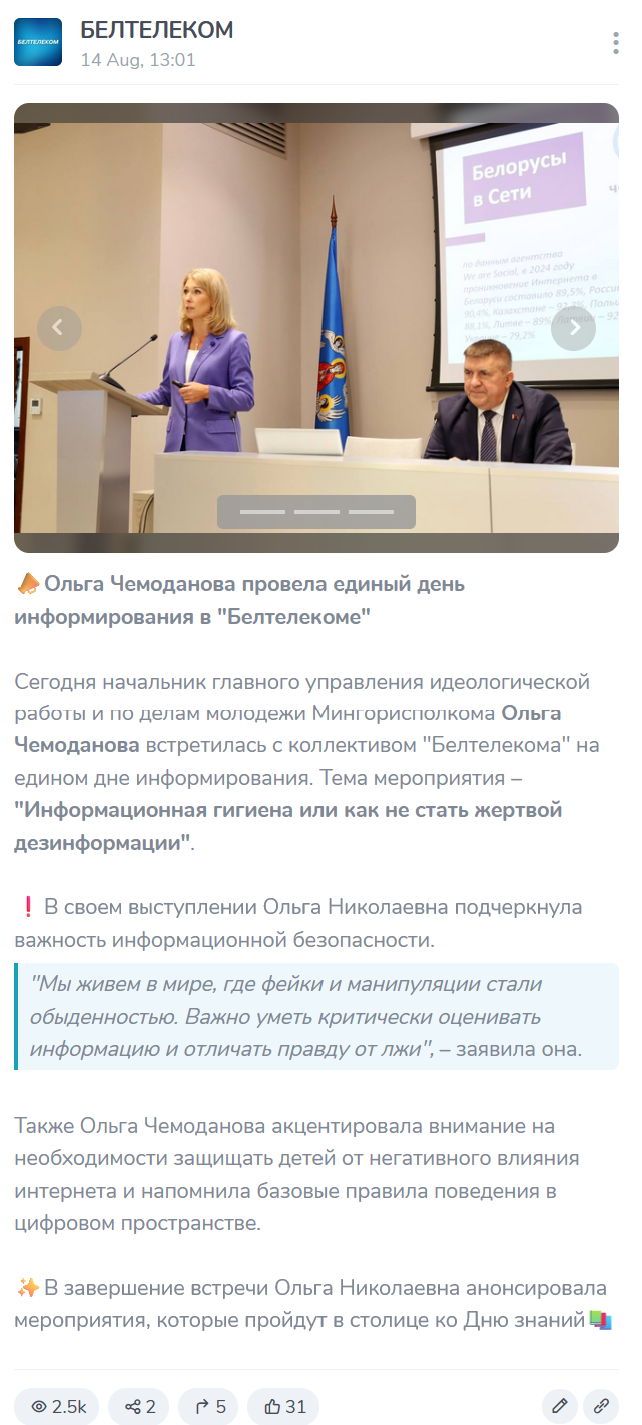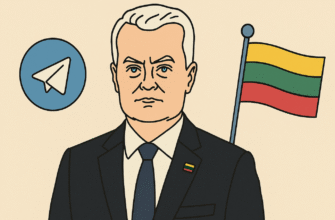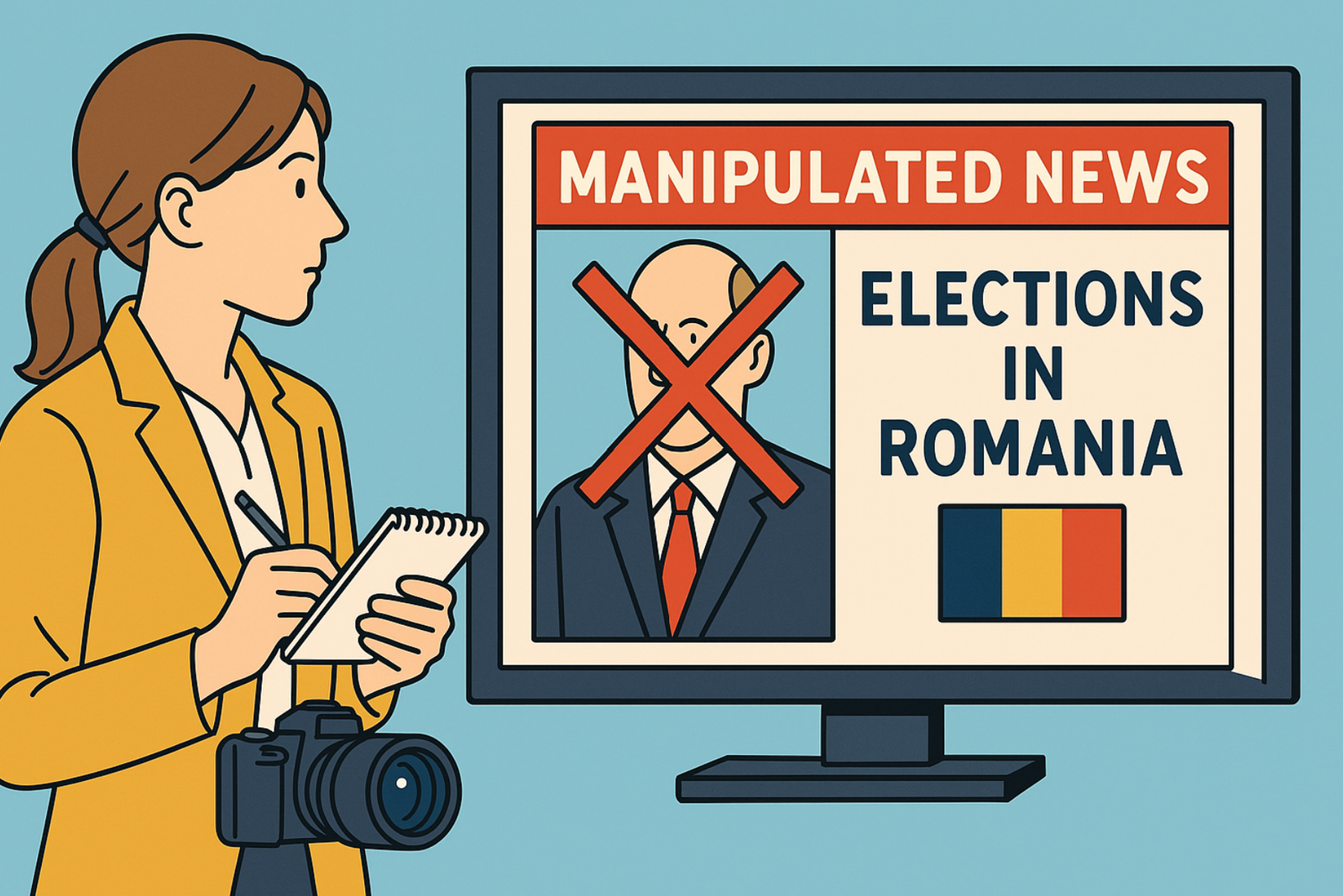Across the Republic of Belarus, on August 15, traditional unified days of informing the population took place. They are held on the third Thursday of every month to reliably inform citizens about the country’s domestic and foreign policy and to promptly address people’s pressing issues. On the agenda were current topics, with the main theme being “Information hygiene, or how not to become a victim of disinformation.”
Publication Methodology For the preparation of this material, a dataset was collected using the TGStat Telegram channel analytics tool. Distribution of posts and mentions:

552 mentions were collected starting from August 1, 2024, which garnered less than 500,000 views.
The Unified Day of Information was mentioned by almost 300 Telegram channels. Almost all of these channels represent state government bodies and enterprises with state ownership.
A directed graph was also built using NodeXL to demonstrate the connection between the channels that reposted and their relationships with each other:

The video transcripts dedicated to this propaganda event were analyzed using LLM models — LLama 3.1 8B and Mistral Nemo Instruct 2407.
Background
Naturally, attention was drawn to the striking “Soviet-style” language in the formulations of this Unified Day of Information. The guess was confirmed: Yes, there is indeed a connection between the unified days of information (UDI) in Belarus and the Soviet lectures of propagandists, political informers, and agitators of the All-Union Society “Knowledge,” as well as weekly political information sessions. This connection is reflected in the similarity of goals, format, and working methods:
1. Goals and Objectives
- Soviet political information and lectures: In the Soviet Union, political information sessions and lectures organized by the “Knowledge” society aimed at political education and ideological indoctrination of citizens. The main task was to foster loyalty to Soviet power, spread Marxist-Leninist ideas, and support government policy.
- Unified Days of Information (UDI): In Belarus, UDI also aim to inform citizens about state policy, with an emphasis on explaining current social, economic, and political issues. A key task remains maintaining trust in the current government and popularizing its initiatives.
2. Format and Methods
- Soviet political information: In the Soviet Union, political information sessions were held regularly, often in the form of short lectures or discussions organized in institutions, enterprises, and educational institutions. The “Knowledge” society’s lecturers were trained agitators who explained complex political and economic issues in an accessible way, presenting world and domestic events from the state’s perspective.
- UDI in Belarus: UDI are also held as meetings with labor collectives, students, and other groups of citizens. At these meetings, government representatives essentially serve as modern political informers, explaining the current political and economic processes to the public. Like in Soviet times, the events are held at pre-determined times and follow a clear theme.
3. Ideological Function
- Soviet political information: These sessions were an important tool of ideological work, ensuring control over public opinion and promoting the official party line.
- UDI in Belarus: UDI serve a similar function, contributing to maintaining the official government stance on state policy and social life. While the methodology and rhetoric may differ, the main goal — shaping and maintaining public consensus — remains similar.
Thus, UDI in Belarus can be seen as an evolution of Soviet political information sessions and lectures of the “Knowledge” society. The main connection between them lies in the function of informing and politically educating the population, shaping public opinion in the interests of the state, and supporting the existing political course.
It is worth recalling that the socio-political weekly “Arguments and Facts” gained wide popularity, especially during the years of Perestroika. The newspaper began publishing in January 1978 in a format half the size of an A4 sheet. Initially, it was a bulletin for lecturers, propagandists, political informers, and agitators, publishing information, statistics, event analysis, and figures that were difficult to find in the official press.
Event Mechanics
Preparation for the Unified Day of Information began in advance. A 29-slide presentation and a supporting document were sent out to members of the information and propaganda groups by the Academy of Public Administration, providing additional information (explanation) for each slide.
The teaser for the day was a meeting between Vladimir Pertsov, the deputy head of the Administration, and the ideological activists of the Minsk region.

Key quotes, as they will form the basis of future propaganda constructs:
- “A Forum of the media community took place in Mogilev. Those present heard messages from the head of state regarding the organization of informational, ideological work, propaganda, and counter-propaganda. Most of you have negative experiences from 2020 and positive experiences in building a new information and ideological paradigm in your area. And we understand that if we fall asleep somewhere, all the emerging vacuums will be instantly filled by those people who can no longer be called alternative journalism. It is absolutely clear that, at a minimum, this is biased press, at most — manifestations of centers of informational-psychological special operations pursuing specific goals in the interests of states and special services that support them.”
- “These are technological giants from unfriendly states, managed by corporations and people pursuing global, including geopolitical and economic, goals concerning the entire collective East, not just our country. And they use digital capabilities as a tool for conveying their geopolitical strategic goals. Therefore, we cannot be naive about this.”
- “On the positive side, you can see the work recently done by our country’s state bodies. Only last year, the Ministry of Information restricted access to 3,388 destructive resources. Many of them are mirrors of destructive resources. The structure here is quite multilayered. This includes the sale of drugs, pornography, and resources that recruit and describe various extremist formations. There are also propaganda destructive extremist resources, and numerous manifestations in the internet of media-like, so-called, journalism-imitating authors who carry out their function of influencing the undecided, loyal, or differently thinking circles of our audience.”
Let’s analyze them in terms of disinformation narratives: First quote: Narrative: It is claimed here that alternative journalism, which does not align with the state’s position, is in fact part of information-psychological operations conducted by other states and their special services. Analysis: This narrative aims to discredit any information sources that do not align with the official state line, portraying them as enemies controlled by external forces. It fosters distrust towards independent media and justifies their suppression as a necessary measure of protection against external threats. This approach is characteristic of authoritarian regimes that seek to restrict access to information, distorting reality to consolidate their power.
Second quote: Narrative: It is argued that technological giants from unfriendly states use their digital capabilities to achieve geopolitical and economic goals against the collective East. Analysis: This reflects a conspiratorial approach, where large technology companies and Western states are portrayed as malicious actors waging a covert war against Eastern states. This creates the image of an external enemy and justifies repressive measures against foreign technologies or information, viewing them as tools of global aggression. Thus, the ideology of closedness and control over the information space is reinforced.
Third quote: Narrative: The state’s work to block destructive resources, including those mimicking journalism, is presented as a positive development. Analysis: This illustrates another aspect of the fight against independent sources of information, which are portrayed as a threat related to drug trafficking, extremism, and pornography. Equating independent journalism with criminal activity and extremism is a powerful propaganda tool aimed at delegitimizing opposition views and strengthening state control over information. This also serves as a justification for censorship and internet restrictions.
Conclusion: All three quotes contain narratives that can be considered disinformation, aimed at creating the image of an external enemy and justifying repressive measures against independent sources of information. These narratives support the ideas of information closure and strict control over the media space, which is characteristic of authoritarian regimes.
Certain officials, such as Olga Chemodanova, head of the Main Directorate of Ideological Work and Youth Affairs, a reserve police colonel, presented the distributed presentation ahead of time on August 14:

A recording of the key event held on the morning of August 15 from the Minsk City Hall:
The technological innovation of this Soviet-style political information cosplay was that a video conference was organized with several dozen enterprises. Even a few questions were remotely asked to the speakers.  The key speakers on disinformation were: a member of the Standing Commission of the Council of the Republic on International Affairs and National Security, the editor-in-chief of “Belarus Today” publishing house Dmitry Zhuk, political commentator of the “Belarus Today” publishing house Andrey Mukavozchik. The discussion was moderated by the general director of the “Minsk News” agency, chairman of the Belarusian Union of Journalists Andrey Krivosheev.
The key speakers on disinformation were: a member of the Standing Commission of the Council of the Republic on International Affairs and National Security, the editor-in-chief of “Belarus Today” publishing house Dmitry Zhuk, political commentator of the “Belarus Today” publishing house Andrey Mukavozchik. The discussion was moderated by the general director of the “Minsk News” agency, chairman of the Belarusian Union of Journalists Andrey Krivosheev.
Political commentator and member of the Belarusian Writers’ Union Andrey Mukavozchik published two books this year: “The Agitator’s Notebook” and “The Fugitive and the Funny.” According to the chairman of the RGOO “Knowledge,” general director of the National Library of Belarus Vadim Gigin, the author’s style is characterized by an informal approach and humor. “It is a style that reaches the reader, touches hearts, pulls various strings, irritates opponents about whom he writes sharply, with sarcasm. At the same time, through a sometimes caricatured picture, through a grotesque image, we see reality, we see the picture of our time. And this, in a sense, is also a chronicle of our time, presented with humor, presented with involvement by a participant in the events,” he said.
Andrey Krivosheev, the author of the term “media-like,” claimed that the Belarusian Media Law between 2012 and 2020 was the most open and liberal. This is untrue, as legal analyses by various international organizations indicated that the law is restrictive and has always caused concern among the Belarusian journalistic community.
An interesting quote from Dmitry Zhuk:  The author of the quote forgets that the Belarusian audience in the country is deprived of access to alternative news information from traditional media such as television, radio, and the print press.
The author of the quote forgets that the Belarusian audience in the country is deprived of access to alternative news information from traditional media such as television, radio, and the print press.
Belarusian officials spread the presentation across enterprises throughout Belarus. For example, Natalia Petkevich, the deputy head of the administration, had to speak with slides at a plastic toy factory in Kobrin, LLC “Polesie.”

Let’s debunk several fakes and disinformation narratives from the prepared presentation.
Debunking
Andrey Mukavozchik, a highly controversial columnist nostalgic for Soviet political studies (another Soviet cosplay), probably humorously told his version of the development of the internet in the world, which, according to him, emerged in the late 1980s, and if the Soviet Union hadn’t collapsed earlier, we would have seen a different internet. Further, the speaker expressed particular aggression towards the creation of Wikipedia, which he calls a “subversive project”: “Wikipedia, which essentially provides the connection, so to speak, between the Anglo-Saxon CIA and a particular young person.”
Another quote: “We are forced to live in this toxic, aggressive, hostile environment. Don’t forget that the internet is primarily a Cold War tool. A tool for the Anglo-Saxons to conquer the entire world with their values, their moral approaches, their slave trade, their hand chopping, their human zoos, and their smallpox blankets for the Indians, and so on, with their moral principles. Every time you turn on the internet, you will remember this, that this is a foreign weapon. That doesn’t mean you shouldn’t use it. It means you should be careful not to get cut by it. This is what you must remember.”
The most illustrative counterargument is a good infographic actually explaining the chronology of the internet’s creation and development:

Mukavozchik also predictably mentioned the Foreign Agents Registration Act (FARA), a U.S. law passed in 1938. Here, Georgian fact-checkers come to our aid, who, due to the adoption of the Law on the “Transparency of Foreign Influence,” lobbied by the pro-Russian “Georgian Dream” party, prepared a detailed explanation of the American FARA law.
In 1938, the United States passed the Foreign Agents Registration Act (FARA) in response to foreign propaganda and political sabotage, particularly from Nazi sources and Bolshevik Soviet Union. However, FARA does not target allies.
ODIHR/OSCE conducted an expert review of the Georgian bill, initiated in 2023, and published the relevant findings: “FARA primarily focuses on regulating lobbying activities.
According to the U.S. Department of Justice, FARA is intended to ensure that the U.S. government and people know who is trying to influence the political agenda on behalf of a foreign state. The essence of the law is as follows: it requires that any (individual or entity) be registered as a foreign agent with the Department of Justice if it engages in activities under the control of a foreign state and participates in political or other activities as defined by the relevant law.
According to a comparative analysis prepared by the International Center for Not-for-Profit Law (ICNL), which works to improve the legal environment for civil society, philanthropy, and public participation worldwide:
• FARA does not require registration solely because an organization receives foreign funding. Registration is necessary if the organization acts under the direct instruction of a foreign government and is under its control.
• Several NGOs and media organizations operating in the U.S. receive foreign grants and aid, but FARA does not require them to register as foreign agents.
• In the U.S., less than 5% of non-profit organizations are registered in the FARA database. Most registered non-profit organizations are affiliates of foreign political parties.
In contrast, the Georgian law requires registration of any organization receiving foreign funding.
Based on all of the above, FARA protects against harmful influence from foreign countries and allows for the prevention of corresponding threats. It is guided not by the mere fact of receiving foreign money, but by specific activities conducted in the interest of a third country.
FARA is not aimed at the activities of public and media organizations, but at risks that may arise from hostile states. However, recently, FARA has faced significant criticism, especially from civil society, which considers the law too vague and containing numerous interpretative possibilities.
There is growing concern about information security, as more than a thousand people from the capital’s largest enterprises, who joined the discussion of this critically important topic online, were misled by inaccurate information, and in this case, deliberately, by disinformation from the columnist of the state publishing house “Belarus Today.”
From the perspective of “information hygiene,” how to distinguish information:

Debunking just one slide from the presentation
for disinformation signs: lies and overgeneralization.



Conclusions
- Unified Days of Information in Belarus are a tool of ideological control and manipulation of public opinion, similar to Soviet political information sessions. The main goal of these events is to foster loyalty to the current government and support its policies by disseminating one-sided information and discrediting alternative sources.
- Information events within the Unified Day of Information include disinformation narratives aimed at creating the image of an external enemy and justifying repressive measures. Propagandists emphasize the supposed threat from Western technology companies and independent journalists, which serves as a justification for censorship and control over the media space.
- Presentations and speeches at the Unified Day of Information contain elements of disinformation and factual manipulation, calling into question their credibility and usefulness for the population. In particular, erroneous and exaggerated claims about foreign influences and the history of the internet are used to create and sustain negative attitudes toward alternative sources of information and freedom of speech.
This publication was developed by a research team under the leadership of Mikhail Doroshevich, PhD.









